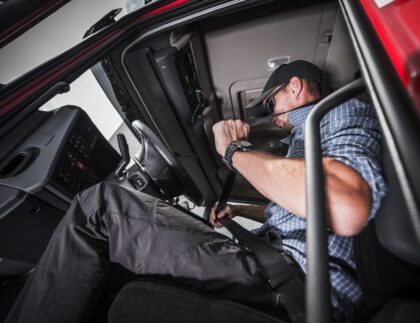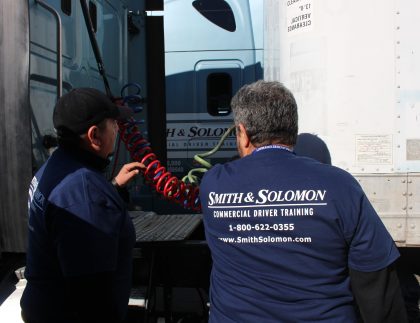
If you are interested in pursuing a career in commercial truck driving, acquiring a CDL (Commercial Driver’s License) is a crucial requirement. To obtain a CDL license, potential applicants must fulfill certain qualifications, undergo testing procedures, and select a reputable training provider.
To qualify for a CDL license, individuals must be at least 18 years old (21 for interstate driving), possess a valid driver’s license, provide proof of residency and legal status, and pass a medical examination. The testing procedure includes a written knowledge test covering the rules and regulations of commercial driving, along with a skills test comprising a pre-trip vehicle inspection, basic control maneuvers, and an on-road driving test.
What to Expect During CDL Programs
A CDL program is an intensive training program designed to provide students with the necessary skills and knowledge to obtain their commercial driver’s license (CDL). The program typically lasts for a period of several weeks to a few months, depending on the specific requirements and the student’s progress.
The program is usually conducted at dedicated training centers or driving schools that have the facilities and equipment to provide comprehensive instruction. These locations are chosen strategically to ensure easy access for students and to provide a conducive learning environment.
The instructional format of the program includes a combination of classroom teachings, permit testing, and practical training with large trucks. In the classroom, students learn about the rules and regulations of operating commercial vehicles, as well as the safety guidelines and best practices. They also undergo rigorous preparation sessions for the permit test, which covers topics such as general knowledge, air brakes, and hazardous materials.
Once students successfully pass the permit test, they proceed to the practical training phase. Here, they gain hands-on experience with driving large trucks under the guidance of experienced instructors. This includes learning how to maneuver, park, and handle the vehicle in various road conditions. Students also practice skills such as pre-trip inspections and coupling and uncoupling trailers.
CDL A vs. B vs. C
Different classes of commercial driver’s licenses allow individuals to operate different types of commercial vehicles.
A Class A CDL allows drivers to operate combination vehicles, such as tractor-trailers and truck and trailer combinations. This is the most common type of CDL and is required for driving vehicles weighing over 26,001 pounds with a towed vehicle weighing over 10,000 pounds.
CDL B allows drivers to operate single vehicles weighing over 26,001 pounds or towing a vehicle weighing less than 10,000 pounds. This class is typically used for buses, dump trucks, and delivery trucks.
A Class C CDL permits drivers to operate vehicles that do not fall under the Class A or B categories. This includes vehicles designed to transport hazardous materials or more than 16 passengers.
Hands-On Training
Hands-on training is a crucial component of preparing individuals for a career in truck driving. The practical aspect of the training begins with students getting hands-on experience in a lab setting, where they are able to actually get behind the wheel and practice real-life scenarios. This portion of the training often takes place in a practice yard where students work on mastering basic skills such as backing up, connecting air brakes and lines, shifting gears, and performing vehicle inspections.
As students progress through their hands-on training, they also learn more advanced techniques that are essential for success in the trucking industry. Courses cover topics like alley docking, entering driveways, backing up into tight spaces, and proper parking procedures. Additionally, students learn about vehicle maintenance and inspection protocols to ensure that they can keep their trucks in optimal working condition.
Careers in the Trucking Industry
With the increasing demand for transportation of goods across the country, careers in truck driving have become popular options for graduates looking to enter the workforce. One potential career path is becoming a straight truck driver, which involves operating a smaller truck to transport goods within a specific region.
Another career option for graduates interested in the trucking industry is pursuing a job as a local truck driver. Local drivers typically operate larger trucks and transport goods within a designated area, such as a city or town. These drivers are often required to make multiple stops throughout their shift, making communication skills and customer service abilities important qualities for success in this role.
The Road to Success
If you’re considering a career in truck driving, it’s important to do your research and understand the requirements and opportunities available to you. By obtaining the necessary CDL training and hands-on experience, you can prepare yourself for a successful career in this growing industry.
At Smith & Solomon, we understand the complexities of the trucking industry and strive to provide our drivers with comprehensive support and resources to help them succeed.
Join us on the road to success!









